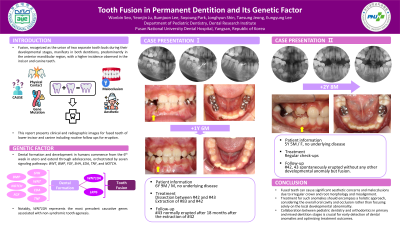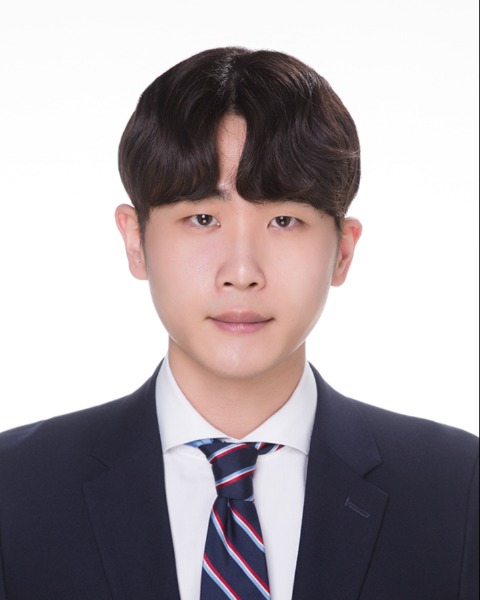Growth & Development
469 - Tooth Fusion in Permanent Dentition and Its Genetic Factor


Wonbin Seo, DDS
resident
Pusan National University Dental Hospital
Pusan National University
Yangsan-si, Kyongsang-namdo, Republic of Korea- YJ
Yeonjin Ju, DDS
Pusan National University Dental Hospital
- BL
Bumjoon Lee, DDS
Pusan National University Dental Hospital
- SP
Soyoung Park, DDS
Pusan National University Dental Hospital
- JS
Jonghyun Shin, DDS
Pusan National University Dental Hospital
- TJ
Taesung Jeong, DDS
Pusan National University Dental Hospital
- EL
Eungyung Lee, PhD
Assistant Professor
Pusan National University Dental Hospital
Yangsan-si, Kyongsang-namdo, Republic of Korea
Presenting Author(s)
Co-Author(s)
Program Director(s)
Dental fusion is defined as the partial or complete union, during development, of two or more adjacent teeth. The etiology of fused teeth remains unclear. Currently, it is considered that direct contact between teeth, caused by physical force or pressure during tooth development, leads to fusion. Additionally, mutations in tooth-related genes such as WNT10A, LRP5, and LRP6 are known to influence dental fusion. Tooth agenesis, inclusive of fused teeth, could give rise to various clinical symptoms such as malocclusion and aesthetic problems. Therefore, appropriate intervention for fused teeth during the deciduous and mixed dentition phases is crucial. The aim of this study is to present two clinical cases of the fusion of mandibular incisors and canines, specifically referring to teeth 42 and 43, and contemplate the treatment methods implemented for each case. To ensure a better prognosis, pediatric dentists must identify dental anomalies such as fusions early, make a diagnosis, and develop a comprehensive treatment plan. The technique described here proposes one option for restoring fused teeth, aiming to restore function, shape, and esthetics.
Identify Supporting Agency and Grant Number: Research supported by National Research Foundation of Korea (NRF) grant by the Korea government (MSIT;
No. 2022R1F1A1074271).

.jpg)